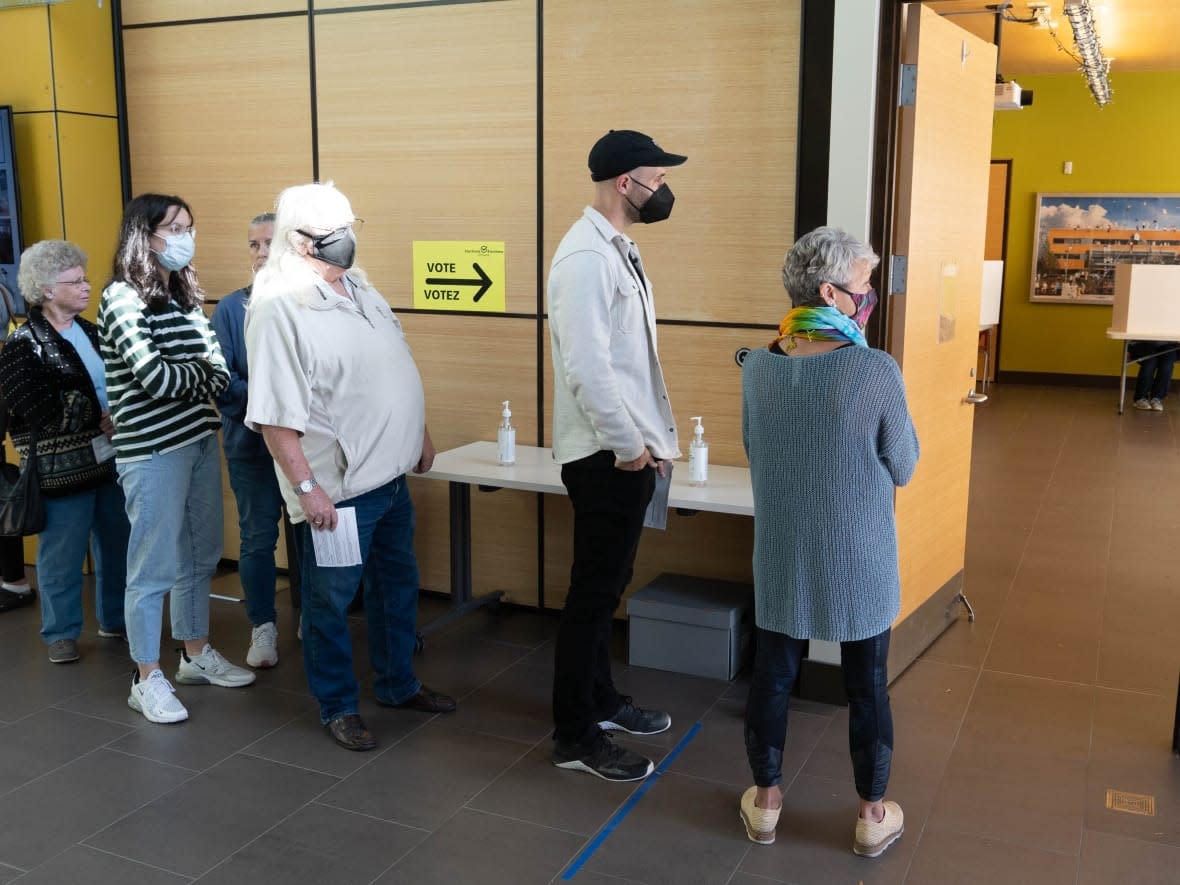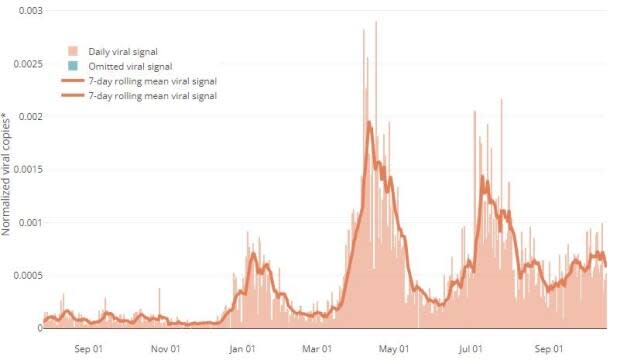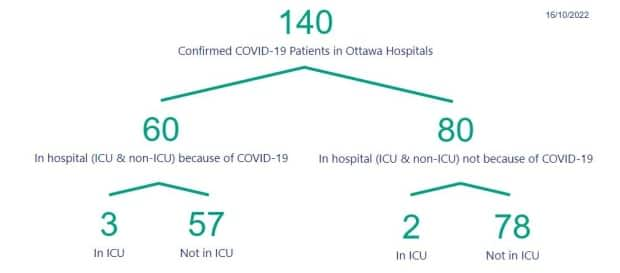High COVID levels persist in and around Ottawa

Recent developments:
Ottawa's pandemic trends are mostly rising.
Hospital leaders say the pressure is rising on their staff.
Six more people with COVID-19 died in Leeds-Grenville-Lanark last week.
The latest guidance
Hospital leaders continues to emphasize the pressure they're facing as cold and flu season hits during the pandemic.
Ottawa Public Health (OPH) said in its weekly Thursday check-in that COVID levels are high. Groups in the Belleville area have requested people there take precautions ahead of what will likely be a challenging fall and winter.
Experts recommend people get their updated COVID booster vaccine for better protection against current coronavirus variants, getting a flu shot when it's available, wearing a mask indoors and in crowded outdoor places and staying home when sick. The latter helps prevent spread of colds and the flu.
While COVID vaccines and previous infection give some protection, that protection will wane and subvariants continue to emerge. There are also the risks of long COVID.
Wastewater
The weekly average level of coronavirus in Ottawa's wastewater is high and has been slowly rising since September. Most recently, it's dropped for three days.

As of Oct. 16, the average about six times higher than this time last year.
Researcher Tyson Graber told CBC Radio's Ottawa Morning Tuesday the subvariant landscape is shifting away from BA.5 dominance to slowly include a higher proportion of the variant known as BF.7.
Measurement of BQ.1 and BQ.1.1, which evade protection more than previous variants, have not been rising in Canadian samples, Graber said.
Tests, outbreaks and cases
Testing strategies changed under the Omicron variant, meaning many COVID-19 cases aren't reflected in current counts. Public health officials now only track and report outbreaks in health-care settings.
Ottawa's test positivity rate has risen for more than a month, currently sitting at 18 per cent. OPH considers that very high. There are very recent signs it may be stabilizing, but it's too early to indicate a trend.
There are currently 68 active COVID outbreaks in Ottawa. This is moderate, according to OPH, and slowly rising.
OPH reported 251 more cases over three days and five more deaths. A total of 910 Ottawa residents who had COVID have died.
Hospitals
Thirty-six Ottawa residents have been admitted to a city hospital with COVID-19, according to OPH's latest update. None are in intensive care.
That number had been slowly rising before a drop at the beginning of this month, but it has now returned to levels seen in late September.
OPH said Thursday that hospitalization numbers were incomplete. In an email Tuesday, it explained officials were catching up on data entry after statutory holidays.
The hospitalization figures above don't include all patients. For example, they leave out patients admitted for other reasons who then test positive for COVID-19, those admitted for lingering COVID-19 complications, and those transferred from other health units.
When you include those kinds of patients, the number increased Tuesday.

Vaccines
Ottawa residents received about 10,300 COVID vaccine doses in the past week, or an average of nearly 1,470 a day. The previous week (which included a long weekend) was about 1,550 a day.
As of the most recent weekly update, 93 per cent of Ottawa residents aged five and up had at least one COVID-19 vaccine dose, 90 per cent had at least two and 61 per cent at least three.
Twenty-seven per cent of Ottawans aged 12 and older had at least four. Nearly 95 per cent of doses last week were fourth doses. All children aged 12 to 17 only became eligible this week.
About 8,100 residents younger than five have had a first dose, which is about 18 per cent of Ottawa's population of that age group.
Across the region
Spread
As of the most recent update, wastewater levels in Leeds, Grenville and Lanark (LGL) counties are some of the highest in 2022.
Trends are rising in Casselman and Morrisburg, low and stable in Cornwall and Hawkesbury and mixed in the Kingston area.
Data from other areas is out of date or unavailable.
The Eastern Ontario Health Unit (EOHU)'s test positivity is high and stable at about 14 per cent. In the Kingston area, it's also a high, stable 18 per cent.
Hospitalizations and deaths
Western Quebec's health authority, CISSSO, reports a stable 83 COVID hospitalizations. One of them is in intensive care.
Eastern Ontario communities outside Ottawa are reporting a rise to 65 COVID hospitalizations, 14 of them in intensive care.
That regional count doesn't include Hastings Prince Edward (HPE) Public Health, which has a different counting method. Its COVID hospitalizations dipped to 35. Three of those patients are in intensive care.
LGL reported six more deaths in its weekly update, which brings the region's 2022 toll to 65 — half of the pandemic total of 130. Along with its wastewater averages, hospitalizations, outbreaks and the case count are also rising.
HPE reported its 66th COVID death of 2022 and 85th overall and the EOHU, its 129th of the year and 263rd overall.
The Kingston area has now had 66 people with COVID die in 2022, three times that number in 2021. It had no reported COVID deaths in 2020.
Vaccines
Across eastern Ontario, between 81 and 92 per cent of residents age five and up have received at least two vaccine doses and between 53 and 64 per cent of those residents have had at least three.


